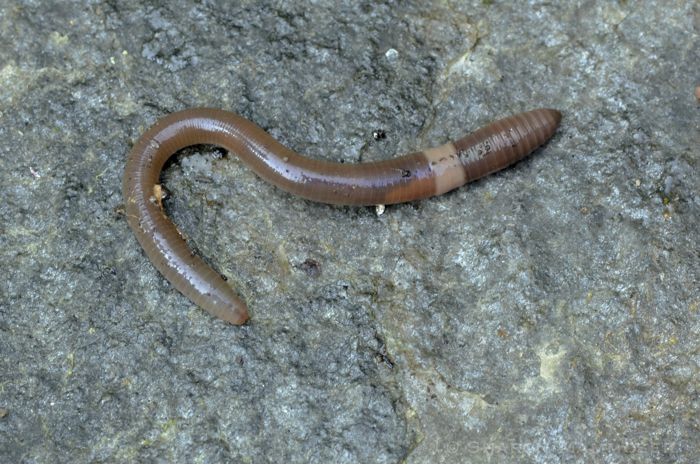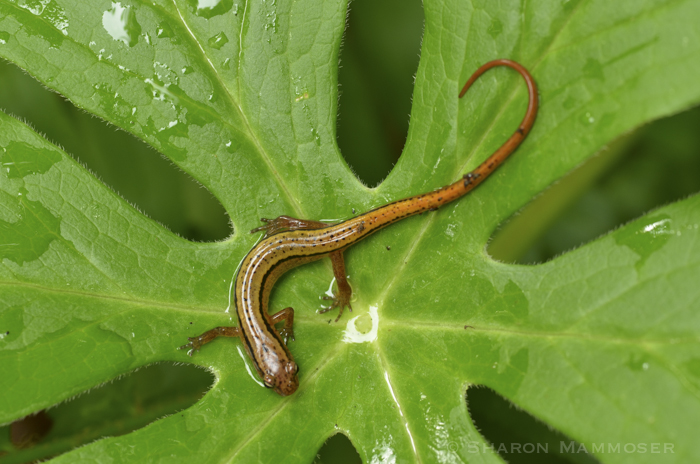 One of my first “jobs” was picking night crawlers from the ground during rainy nights. My older brother, Don, had the entrepreneurial vision to start a worm business, selling them by the dozen to fisherman passing our house on the way to the Conservation Club. He paid me and my younger brother Doug a whopping 1 cent per worm! After dark on rainy nights, the three of us would head outside with our flashlights and empty collecting bin that hung from our belts–made by cutting away the plastic from an old milk gallon container. We started in different sections of our yard, moving silently along in a methodical way until we’d covered the whole space, picking all of the worms that rose to the surface in the wet conditions. Then we’d go knock on our neighbors’ doors, letting them know we’d be crawling around their front yard too. Later, when Don decided he was ready to move onto other things, Doug and I took over the business, raising the cost of a dozen worms and enjoying the general pay raise. However, this was not a venture that would make us rich! But we did see and handle a lot of worms.
One of my first “jobs” was picking night crawlers from the ground during rainy nights. My older brother, Don, had the entrepreneurial vision to start a worm business, selling them by the dozen to fisherman passing our house on the way to the Conservation Club. He paid me and my younger brother Doug a whopping 1 cent per worm! After dark on rainy nights, the three of us would head outside with our flashlights and empty collecting bin that hung from our belts–made by cutting away the plastic from an old milk gallon container. We started in different sections of our yard, moving silently along in a methodical way until we’d covered the whole space, picking all of the worms that rose to the surface in the wet conditions. Then we’d go knock on our neighbors’ doors, letting them know we’d be crawling around their front yard too. Later, when Don decided he was ready to move onto other things, Doug and I took over the business, raising the cost of a dozen worms and enjoying the general pay raise. However, this was not a venture that would make us rich! But we did see and handle a lot of worms.
If you fish or garden, you have surely seen those big, fat, pinkish worms we call Earthworms that wiggle away from the light and don’t like to be touched. What do you know about these legless creatures that live in our soil? Here are some facts that may surprise you:
1. As you know from the Weekly Puzzler, Earthworms are hermaphrodites, possessing both female and male sex organs. But did you know when two get together, both worms produce fertilized eggs? One worm can produce 1000 eggs in 6 months!
2. Many people mistakenly think that if you cut a worm into 3 or 4 or 5 sections, each section will regenerate a new worm. This is not true. Worms CAN regenerate, but it is usually just their tail ends that grows back, not multiple worms from multiple sections.
3. Worms do not have any lungs. Instead, they breathe directly through their skin. This is why their skin always needs to be moist. If their skin dries out and remains this way for too long, they will die. Their skin exudes a lubricating mucus that helps them move through their underground burrows and stay moist.
4. Worms do not have ears, a nose or ears. They can detect light and vibration through their skin and will always try to move away from lights into darkness.
5. In one acre there can be more than a million worms! That’s a lot of worms!
6. Speaking of a lot of worms, did you know that worldwide there are 6000 species of worms? In the United States and Canada, there are 180 species.
7. Of those 180 species that we have in the United States, 60 ARE INVASIVE–which is defined by Webster’s as “tending to spread prolifically and undesirably or harmfully.” Yet ask 100 people about worms and most will tell you ALL worms are good and all worms are beneficial. This is not true, though many worms ARE important decomposers, responsible for returning important nutrients like potassium and nitrogen to the soil.
The reason that they can be bad is that in areas covered long ago by glaciers, native worms didn’t exist and the ecosystem developed without a need for earthworms. These forests traditionally had a deep layer of what we call “duff”–which is simply the layer of decomposing leaves and organic matter that resides above the soil. Many plants, including sugar maples, trillium, and trout lilies, AND animals flourish when this thick layer of duff is present.

When non-native earthworms were introduced into these areas–first by Europeans intentionally and now by unknowing fisherman, gardeners and other people, many of the worms run through the duff–which took years to accumulate– in record time, resulting in compact soil that lacks essential nutrients. Small creatures then like insects and salamanders are affected because they require–and flourish in– the thick layer of duff. When these animals decline so then can other animals who depend on them for food.
8. The earthworm has 5 hearts and their mouth end is that closest to the thickened section of their bodies called the clitellum. The clitellum secretes a sac into which the eggs are deposited after mating.
9. Baby worms emerge from eggs after 7 days, fully formed but tiny. They will reach full size in about one year. Size depends on the species of worms–from 1/2 inch to a whopping 10 feet! Here in the US, our worms can grow to a maximum of 14 inches. (These we often refer to as Night Crawlers and are the ones very desirable to fisherman)
10. Worms can live up to 8 years but most will live less than 2. You know why? Just picture all of the animals from robins to salamanders to frogs and moles and everything in between that will happily make them a meal. It is hard to be a worm! when you have THAT MANY different animals wanting to make you dinner!


Soooooo….. How can you differentiate a good from a bad earthworm?
Yes, so that is a great question, one that I’m sure many people had after reading the post. In the northern states, like Wisconsin and Minnesota, ALL worms that you find in the soil are non-native worms and therefore, “bad.” It gets more complicated in the states that actually have some native earthworms, like North Carolina.
Because I am not a worm expert or even a biologist, I will do some research and then write a follow-up post about this that I will publish next week. Great question! Thanks for taking the time to write.
Do you do a blog every day? or just in the olden days. I am 8 and I just found out about worms.
Laney, I do not blog everyday, but several times a week. My favorite posts are the puzzlers, which I post every Saturday. Have you seen them? Thanks for taking time to comment! Hope to see you again soon.